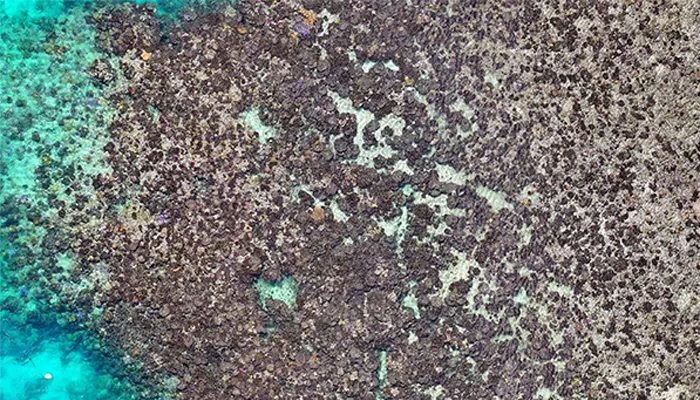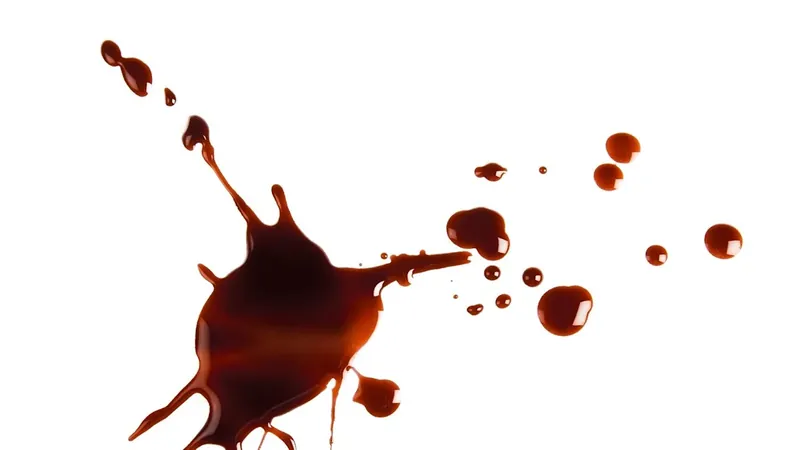
Shocking Coral Decline Unveiled: 92% Mortality Rate After Bleaching
2025-07-09
Author: Wei
Staggering Numbers from Australia's Great Barrier Reef
In a groundbreaking revelation, researchers have uncovered a staggering 92% coral mortality rate following a devastating bleaching event at Lizard Island on the stunning Australian Great Barrier Reef. This catastrophic loss represents one of the highest rates of coral mortality ever recorded worldwide.
The Fourth Global Coral Bleaching Event Strikes Again
The shocking findings stem from the Fourth Global Coral Bleaching Event, declared by the National Oceanic and Atmospheric Administration (NOAA) in April 2024. This massive environmental crisis wreaked havoc across the reef ecosystems, leaving behind a trail of destruction.
Innovative Technology to the Rescue
Published in the journal 'Coral Reefs', the study employed cutting-edge drone technology to meticulously map coral bleaching in March 2024, followed by a return visit in June to gauge survival and mortality rates in the affected areas. Professor Jane Williamson from the School of Natural Sciences at Macquarie University, a senior author of the study, emphasized the importance of this technological advancement.
"Using drone-derived imagery, we tracked the bleached and living coral both during and after the bleaching event," noted Williamson, highlighting the significant shift in research capabilities.
A New Standard for Assessing Coral Health
Previously, assessing the impact of coral bleaching over extensive areas relied heavily on underwater surveys focusing on individual coral colonies, leaving large gaps in understanding. However, this innovative approach allows researchers to upscale the monitoring of bleaching effects across broader regions with unprecedented precision.
Team Efforts Yield Alarming Results
Dr. Vincent Raoult, the lead author from Griffith University’s School of Environment, along with a collaborative team from Macquarie University, James Cook University, CSIRO, and GeoNadir, analyzed 20 sections—each measuring 10 meters by 10 meters—across the northern and southern reefs of Lizard Island. The results were disturbing: an average of 96% of living corals in the surveyed areas were affected by bleaching, culminating in the alarming mortality rate of 92%.
Drones: The Future of Coral Research
Utilizing DJI Mini 3 Pro and Autel Evo II drones, the research team collected high-resolution imagery that was later verified by in-water observations in June 2024. This pioneering method not only enhances the understanding of coral health but also signals a turning point in how we assess and respond to the catastrophic impacts of climate change on coral reefs.


 Brasil (PT)
Brasil (PT)
 Canada (EN)
Canada (EN)
 Chile (ES)
Chile (ES)
 Česko (CS)
Česko (CS)
 대한민국 (KO)
대한민국 (KO)
 España (ES)
España (ES)
 France (FR)
France (FR)
 Hong Kong (EN)
Hong Kong (EN)
 Italia (IT)
Italia (IT)
 日本 (JA)
日本 (JA)
 Magyarország (HU)
Magyarország (HU)
 Norge (NO)
Norge (NO)
 Polska (PL)
Polska (PL)
 Schweiz (DE)
Schweiz (DE)
 Singapore (EN)
Singapore (EN)
 Sverige (SV)
Sverige (SV)
 Suomi (FI)
Suomi (FI)
 Türkiye (TR)
Türkiye (TR)
 الإمارات العربية المتحدة (AR)
الإمارات العربية المتحدة (AR)